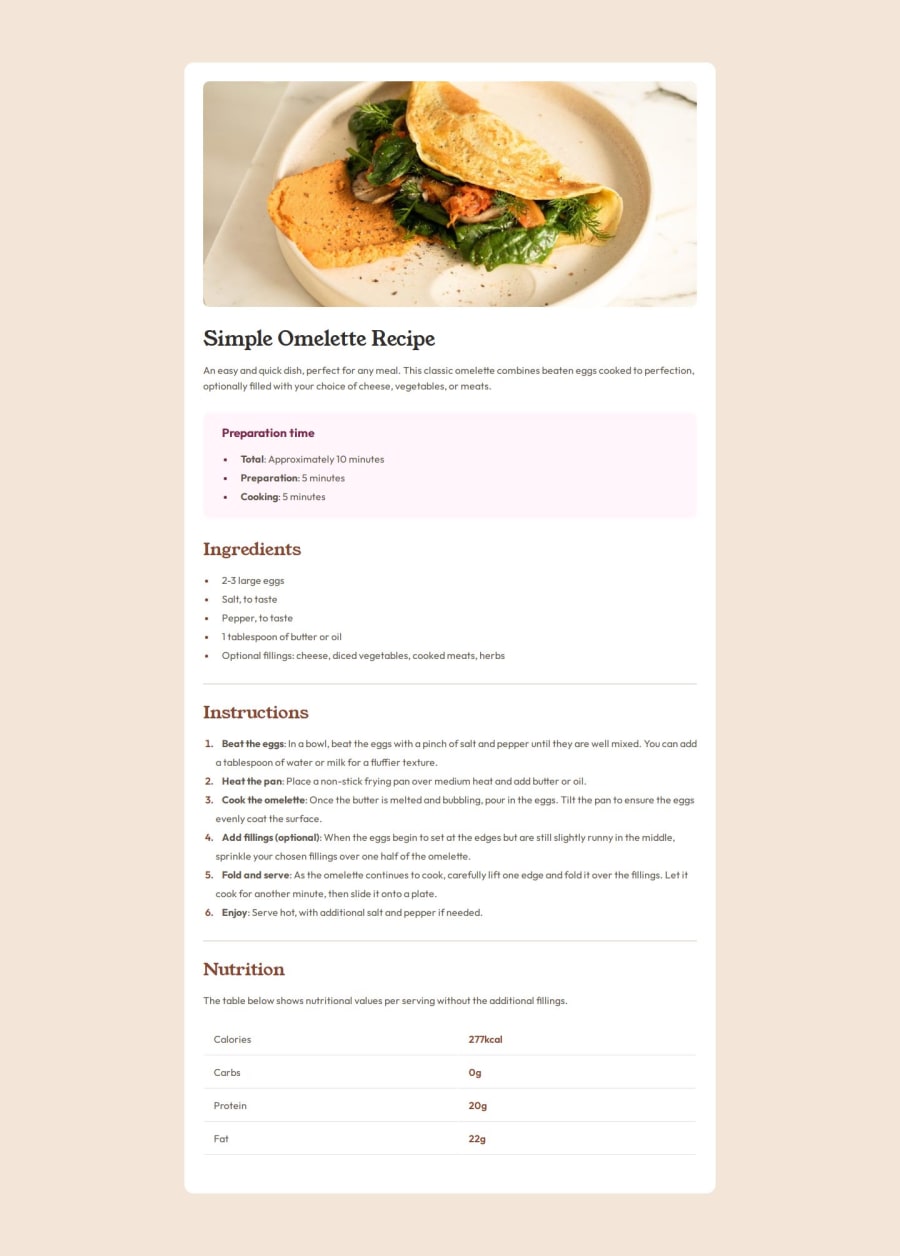
Design comparison
Solution retrospective
I learned how to make use of the CSS custom properties which make it possible for me to easily reuse certain properties of my design. I also learned how to make use of semantic HTML tags in my HTML structure.
In my future implementations i will make use of a CSS framework like bootstrap or tailwindcss to ease the styling of my webpage and possible use build tools as well to minimize files and assets before deploying.
What challenges did you encounter, and how did you overcome them?Getting the accurate dimension of the sections in the design image while designing. I tried mapping the spaces with my eyes and estimating dimensions.
What specific areas of your project would you like help with?The best possible way to make use of fonts in CSS. From importing to assigning it to areas of your webpage design.
Community feedback
Please log in to post a comment
Log in with GitHubJoin our Discord community
Join thousands of Frontend Mentor community members taking the challenges, sharing resources, helping each other, and chatting about all things front-end!
Join our Discord
